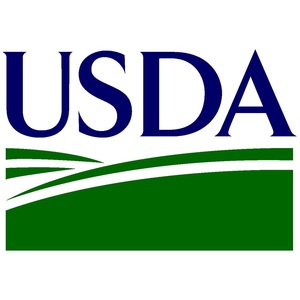USDA issues final rule for Advanced Biofuel Payment Program




December 31, 2019
BY Erin Krueger
The USDA Rural Business-Cooperative Service published a final rule for the Advanced Biofuel Payment Program on Dec. 27. The program provides quarterly payments to producers of eligible advanced biofuels. To be eligible for payments, the advanced biofuels produced must be derived from renewable biomass other than corn kernel starch at a biorefinery located in the U.S.
A proposed rule for the Advanced Biofuel Payment Program was first issued in April 2010. An interim rule published in February 2011 was in effect until the publication of the new final rule on Dec. 27.
The final rule includes a variety of changes the USDA has implemented to the program. The agency said the changes are a result of its experiences and lessons learned from administering the program, the need to bring the program into statutory compliance, a need to clarify earlier provisions, and the agency’s considering of public comments.
Advertisement
Advertisement
The final rule includes changes to several definitions. It expands the definition of “eligible advanced biofuel producer” to include government entities, schools, and other types of educational facilities. The definition of “biofuel facility” is rescinded and replaced with the definition “biorefinery.”
The rule also adds the definitions for “large producer” and “parent company” to the program’s regulations. The USDA said the change was made to ensure compliance with the statutory funding limitation for producers of a certain size.
The rule maintains the refining capacity equivalence for biogas and solid eligible advanced at 15.9 million British thermal units (MMBtu) of biogas and/or solid advanced biofuel per year, as established in the interim rule. The USDA also indicated that it is moving away from the use of “refining capacity” and instead is using “production in the prior fiscal year” in relation to the 150 million gallons or equivalents. The agency said “experience led us to conclude that ‘refining capacity’ is insufficiently specific to its purpose of imposing a funding limitation upon producers of a certain size.” As a result, the USDA is using the producer’s reported advanced biofuel production in the previous year as a measurable proxy for refining capacity. Also included in that measure is the prior year advanced biofuel production of any company or corporation in which the reporting producer has a controlling interest.
A variety of changes have also been made to the biofuel eligibility provisions of the program. The program regulations have been amended to specify the advanced biofuel must be a final product. That change was made to help ensure that payments are not being made for products that are used as feedstocks for advanced biofuels.
Advertisement
Advertisement
The regulations have also been amended to state explicitly that certain biofuels are ineligible for payment. Flare gases and waste stream products derived from paper milling and similar processes were excluded from the program. The USDA also determined that the production of advance biofuel derived from eligible renewable biomass involves a conversion process that creates a physical, and/or chemical, and/or biological change to the renewable biomass feedstock. An example of a change of physical state includes progressing energy grasses or wood biomass through a hammermill and pellet die at sufficient pressure to chase the feedstock to heat up and release natural lignins that bind the material together into pellets. An example of biological change is the anaerobic digestion of manure or food waste into biogas. An example of chemical changes include the fatty acid methyl ester processing of fats, oils and greases into biodiesel; the enzymatic hydrolysis of cellulosic feestocks into ethanol; and the torrefaction of woody biomass into solid fuel.
In addition, changes have been made to the program’s payment provisions. The program’s previous two-tiered payment approach has been replaced with a single tier based on actual production. The USDA said it believes the change is the best approach to encourage both existing and new advanced biofuel production for two reasons. First, it will provide greater payment certainty to all eligible participants. Second, it distributes equitably among all producers. The USDA said that under the single tiered systems, payments are made for actual production during the fiscal year and on a quarterly basis for actual production for which payments are sought. Payment rate calculations are based on available funds and on the amount of eligible advanced biofuel produced. Participating producers are required to submit payment request applications each quarter.
Additional information, including a full list of changes made to the program, is available on the Federal Register website.
Upcoming Events





